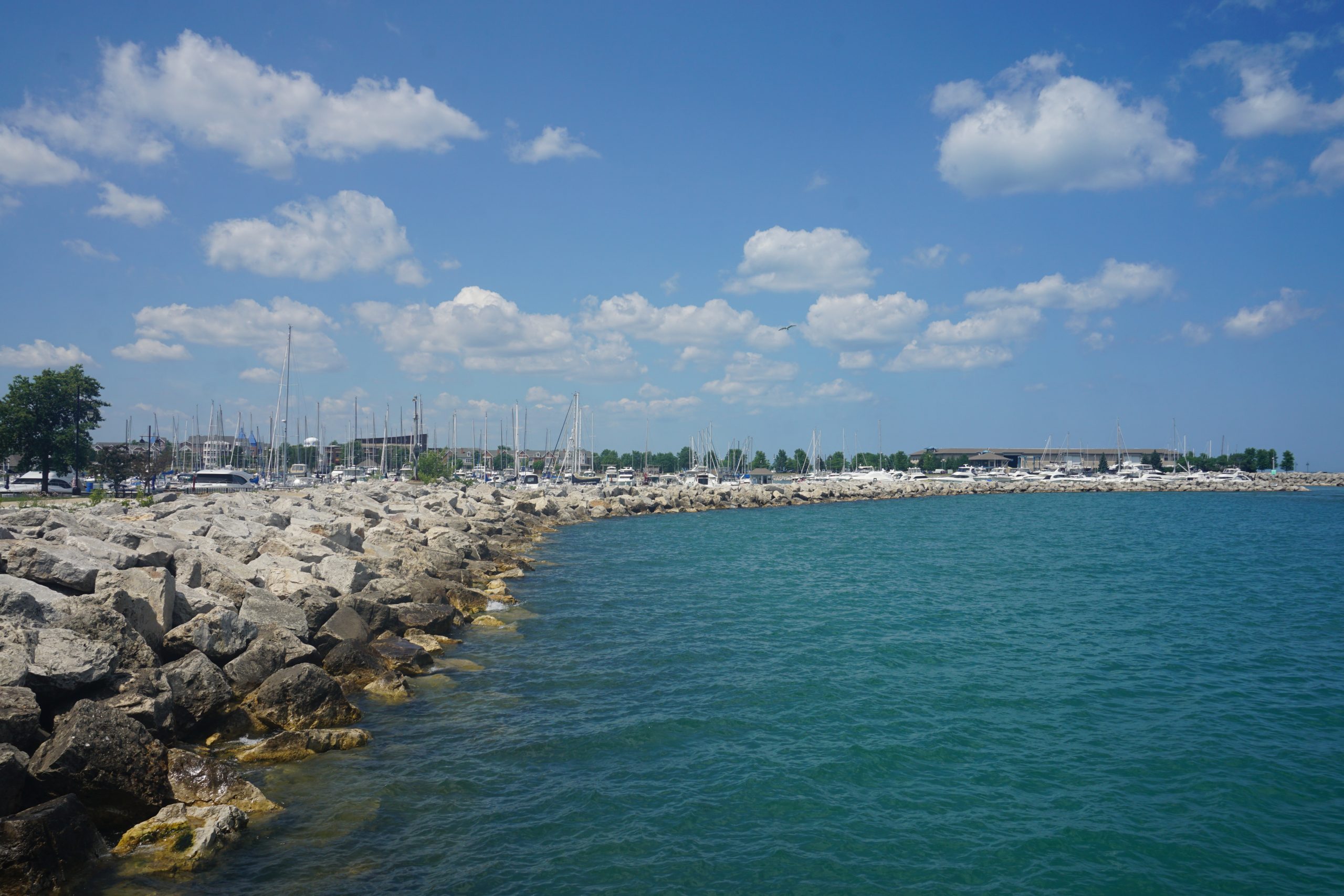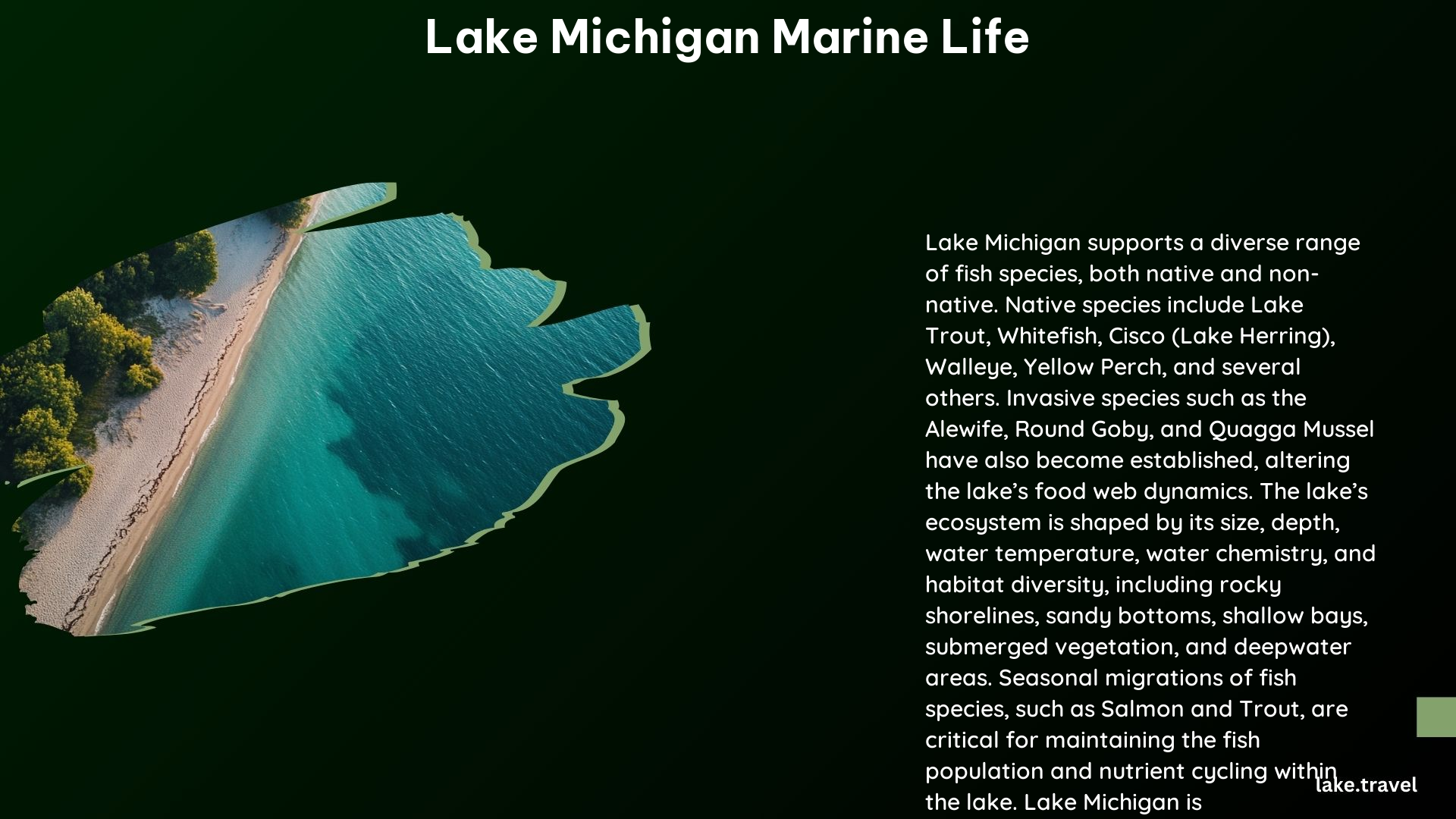Lake Michigan is home to a rich and diverse array of marine life, both native and invasive species. From the iconic lake trout to the elusive lake sturgeon, this Great Lake offers a fascinating glimpse into the underwater world. In this blog post, we’ll dive deep into the captivating marine life of Lake Michigan, exploring its native species, invasive species, zooplankton, and the impact of heatwaves on the ecosystem.
Native Species of Lake Michigan

Lake Michigan is home to several native species that have thrived in the lake for centuries. These species play a crucial role in the lake’s ecosystem and are highly prized by anglers and conservationists alike.
- Lake Trout: Also known as lake char, this species is native to Lake Michigan and is highly prized by anglers for its delicious flavor and impressive size.
- Yellow Perch: A common and popular sport fish, yellow perch are native to the lake and are known for their bright yellow color and delicate taste.
- Lake Sturgeon: One of the oldest species in the lake, lake sturgeon are ancient fish that can live up to 150 years and can grow to impressive sizes.
- Lake Whitefish: A native species, lake whitefish are an important part of the lake’s ecosystem and are often targeted by commercial fishermen for their flaky, white flesh.
- Muskellunge: The Wisconsin state fish, muskellunge are a large, aggressive predator that is native to Lake Michigan and are highly sought after by anglers.
Invasive Species in Lake Michigan

While the native species of Lake Michigan are a source of pride and conservation, the lake has also been impacted by the introduction of several invasive species. These non-native species can disrupt the delicate balance of the ecosystem and pose a threat to the native species.
- Sea Lamprey: Also known as the “vampire fish,” sea lampreys are parasitic eel-like fish that attach to other fish and suck their blood, causing significant damage to native fish populations.
- Alewives: Anadromous fish that typically live in the West Atlantic Ocean, alewives were introduced to Lake Michigan in the mid-1900s and have flourished, becoming a dominant species in the lake.
- Pacific Salmon: Introduced to control the alewife population, Pacific salmon such as chinook and coho salmon are now common in the lake and have become a popular target for anglers.
- Zebra and Quagga Mussels: These invasive mussels have had a significant impact on the lake’s ecosystem, filtering nutrients from the water and altering the food web.
Zooplankton in Lake Michigan
Zooplankton play a crucial role in the lake’s ecosystem, serving as a vital food source for many species of fish. Understanding the trends and factors affecting zooplankton biomass in Lake Michigan is essential for maintaining the health of the lake’s marine life.
- Biomass: The average concentration of zooplankton biomass in Lake Michigan waters between 2014 and 2019 was lower than the median value of all zooplankton biomass concentration levels between 1997 and 2019.
- Trend: There was no significant trend in zooplankton biomass concentration between 2014 and 2019.
Impact of Heatwaves on Lake Michigan Marine Life
As climate change continues to impact the Great Lakes region, heatwaves have become an increasing concern for the marine life of Lake Michigan. These extreme weather events can significantly alter the lake’s ecosystem and affect the distribution and behavior of its inhabitants.
- Water Temperature: Heatwaves can significantly increase water temperatures, affecting the distribution and behavior of marine life in Lake Michigan.
- Fish Migration: Changes in water temperature can cause fish to migrate to different areas of the lake, altering their habitats and ecosystems.
The Future of Lake Michigan’s Marine Life
As we look to the future, the marine life of Lake Michigan faces a range of challenges and opportunities. Understanding the factors that influence the lake’s ecosystem, from water clarity to conservation efforts, is crucial for ensuring the long-term health and sustainability of this unique and valuable resource.
- Water Clarity: The presence of zebra and quagga mussels has improved water clarity in Lake Michigan, but this has also altered the lake’s ecosystem.
- Fish Populations: Conservation efforts are in place to manage invasive species and protect native fish populations, ensuring the continued vibrancy of Lake Michigan’s marine life.
Conclusion
Lake Michigan is a treasure trove of marine life, with a rich diversity of native and invasive species. From the iconic lake trout to the elusive lake sturgeon, this Great Lake offers a captivating glimpse into the underwater world. By understanding the factors that influence the lake’s ecosystem, we can work to protect and preserve the marine life of Lake Michigan for generations to come.
References
- Dive Chicago. (n.d.). Marine Life in Lake Michigan. Retrieved from https://divechicago.com/marine.html
- City Cruises. (2022, September 13). The Surprising Sea Life of Lake Michigan. Retrieved from https://www.cityexperiences.com/blog/lake-michigan-sea-life/
- Schlitz Audubon Nature Center. (2018, April 19). Lake Michigan Wildlife: Native & Invasive Species. Retrieved from https://www.schlitzaudubon.org/2018/04/19/a-history-of-lake-michigan-wildlife/
- NOAA. (n.d.). Lake Michigan | National Marine Ecosystem Status. Retrieved from https://ecowatch.noaa.gov/regions/great-lakes/lake-michigan
- Michigan Sea Grant. (n.d.). Lake Michigan. Retrieved from https://www.michiganseagrant.org/topics/great-lakes-fast-facts/lake-michigan/.
